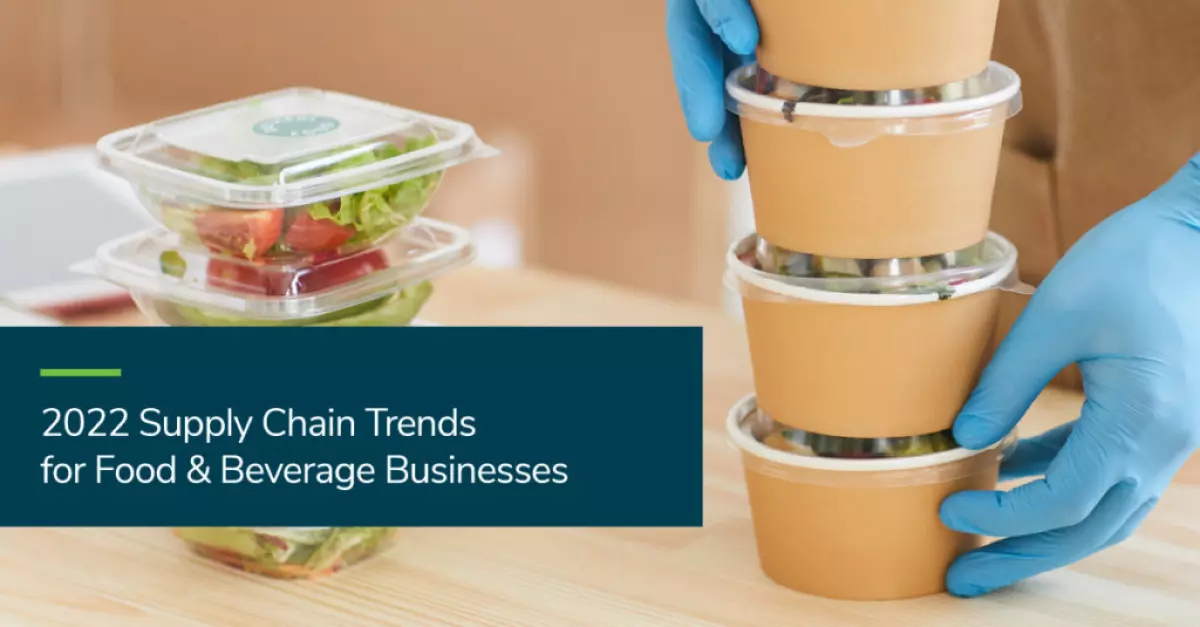
In today's rapidly changing world, the food and beverage industry is facing new challenges in the supply chain. As we enter 2022, it's essential for businesses to stay up to date with the latest trends and adapt to ensure they continue to provide safe and high-quality products to consumers. Let's explore the key supply chain trends for the food and beverage industry in 2022 and how businesses can overcome these challenges with the right strategies and tools.
Trend #1: COVID-19 and Supply Chain Disruption
The ongoing effects of the pandemic are still being felt across industries, including the food and beverage sector. Lockdowns, trade tensions, and natural disasters have created chaos in the supply chain. This disruption has led to raw material, product, and labor shortages. It has also increased the risk of food fraud, as opportunistic individuals take advantage of the chaos to produce counterfeit or low-quality products. Additionally, a shortage of food inspectors further exacerbates these concerns.
Food and beverage businesses must closely monitor this supply chain trend and address it appropriately to ensure consumer safety and product quality. By implementing robust quality control measures and leveraging technology solutions, businesses can mitigate these risks.
Trend #2: Growth of Cold-Chain and Off-Premise Food Service Solutions
The pandemic has led to a significant shift in consumer behavior, with a decrease in eating out and a rise in at-home options. Ready-to-eat meals, meal kits, and retail options have gained popularity. Additionally, consumers' preference for healthy and minimally processed foods has increased the demand for cold-chain food items.
Food and beverage businesses must adapt to this trend by offering safe cold storage and transportation solutions. To capitalize on the shift, businesses need to consider the different labor requirements, food processing methods, and packaging options associated with the cold-chain supply chain.
Trend #3: Increase in Hybrid-Routing, Nearshoring, and Omnichannel
Demand for flexible and fast delivery options has risen, leading to the emergence of smaller, agile distributors and last-mile delivery services. The supply chain disruption has also prompted businesses to consider nearshoring or reshoring, sourcing supplies closer to home for better control and reduced inventory.
Furthermore, the omnichannel approach has become an expectation for consumers. Businesses need to ramp up their direct-to-consumer efforts and provide a seamless shopping experience online, in-store, or through other channels.
Trend #4: Circular Supply Chain
A traditional linear supply chain model is no longer sufficient. The sustainability movement and concerns over food scarcity and security have given rise to a circular economy approach. This approach emphasizes reusing, recycling, remaking, and redistributing resources to create a more sustainable supply chain with zero waste.
Food and beverage businesses can contribute to the circular economy by finding creative ways to utilize food waste, such as converting it into renewable energy and fertilizer or donating surplus food to charities and vulnerable communities.
Trend #5: Tech Use Soars
To navigate the challenges posed by the supply chain disruption, food and beverage businesses must embrace technology. Analyzing data, leveraging automation and artificial intelligence, and adopting eCommerce platforms are essential strategies to overcome labor shortages and digitize processes.
This is where FoodBusiness ERP comes in. Built on Sage X3 and developed from industry experience, FoodBusiness ERP provides a holistic solution for managing manufacturing, tracking, inventory, sales, finance, and quality needs. With industry-specific functionality and real-time visibility into inventory, businesses can optimize their operations and maximize production and inventory management.
In conclusion, staying ahead of supply chain trends is crucial for the success of food and beverage businesses in 2022. By embracing innovation, implementing best practices, and adopting the right tools like FoodBusiness ERP, businesses can overcome challenges and thrive in today's dynamic marketplace. To learn more about optimizing your operations and maximizing production and inventory management, contact FoodBusiness ERP for a demo. We'd love to chat!

















